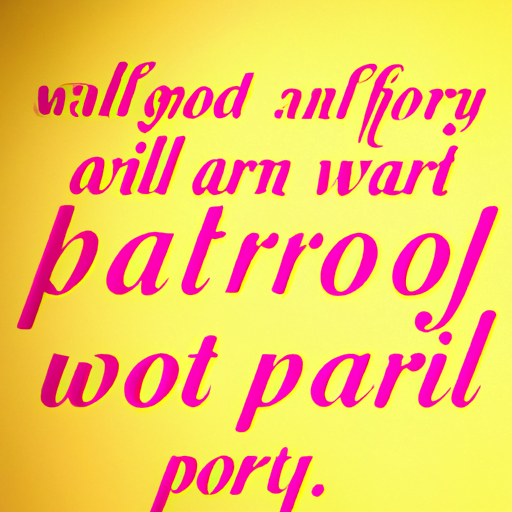
-
Table of Contents
- Hand Lettering and Calligraphy in Modern Design
- The History and Evolution of Hand Lettering and Calligraphy
- The Role of Hand Lettering and Calligraphy in Modern Design
- Logos and Branding
- Packaging and Labels
- Social Media Graphics
- The Benefits of Hand Lettering and Calligraphy in Design
- Uniqueness and Personalization
- Authenticity and Craftsmanship
- Emotional Connection and Engagement
- Conclusion
Hand Lettering and Calligraphy in Modern Design

Hand lettering and calligraphy have become increasingly popular in modern design. From logos and branding to packaging and social media graphics, these artistic techniques add a unique and personal touch to any design project. In this article, we will explore the history and evolution of hand lettering and calligraphy, their role in modern design, and the benefits they offer to designers and businesses.
The History and Evolution of Hand Lettering and Calligraphy
Hand lettering and calligraphy have a rich history that dates back centuries. Calligraphy, in particular, has been practiced in various cultures around the world, including ancient China, Japan, and the Islamic world. It was primarily used for religious texts, manuscripts, and official documents.
Hand lettering, on the other hand, emerged as a form of artistic expression in the 20th century. It gained popularity during the Art Nouveau and Art Deco movements, where artists like Alphonse Mucha and Erté incorporated hand-drawn letterforms into their illustrations and designs.
In recent years, hand lettering and calligraphy have experienced a resurgence in popularity. This can be attributed to several factors:
- The rise of social media platforms like Instagram, where artists can showcase their work and gain a following.
- The desire for unique and personalized designs in a world saturated with digital and mass-produced content.
- The growing appreciation for craftsmanship and the handmade aesthetic.
The Role of Hand Lettering and Calligraphy in Modern Design
Hand lettering and calligraphy play a crucial role in modern design by adding a human touch and a sense of authenticity to digital and print materials. Here are some key areas where these techniques are commonly used:
Logos and Branding
A well-crafted logo is essential for any business or brand. Hand lettering and calligraphy can help create a unique and memorable logo that stands out from the competition. By customizing letterforms and adding flourishes, designers can capture the essence of a brand and convey its personality.
For example, the logo of the clothing brand “Anthropologie” features hand-drawn lettering that reflects the brand’s bohemian and artistic vibe. This handcrafted approach sets it apart from other fashion brands and resonates with its target audience.
Packaging and Labels
Hand lettering and calligraphy are also commonly used in packaging and labels to create an upscale and artisanal feel. Whether it’s a hand-drawn label on a bottle of craft beer or a handwritten tag on a handmade soap, these techniques add a personal touch and elevate the overall product experience.
One notable example is the packaging of “Le Labo” fragrances. Each bottle is labeled with the fragrance name and details written in elegant calligraphy. This attention to detail enhances the luxurious and exclusive nature of the brand.
Social Media Graphics
Social media has become a powerful marketing tool, and eye-catching graphics are essential for capturing attention and engaging audiences. Hand lettering and calligraphy can help create visually appealing and shareable content that stands out in a crowded feed.
Brands like “Tiffany & Co.” often use hand lettering in their social media graphics to convey a sense of elegance and sophistication. By combining calligraphy with beautiful product photography, they create a cohesive and visually stunning brand presence.
The Benefits of Hand Lettering and Calligraphy in Design
Hand lettering and calligraphy offer several benefits to designers and businesses:
Uniqueness and Personalization
With hand lettering and calligraphy, designers can create custom letterforms and unique compositions that cannot be replicated with digital fonts. This allows brands to stand out and establish a distinct visual identity.
For example, the hand-lettered logo of the coffee chain “Starbucks” has become instantly recognizable worldwide. The intricate lettering and mermaid icon add a personal touch and create a sense of familiarity and connection with customers.
Authenticity and Craftsmanship
In a world dominated by digital and mass-produced content, hand lettering and calligraphy bring a sense of authenticity and craftsmanship. The imperfections and subtle variations in hand-drawn letterforms add character and warmth to designs.
The brand “Coca-Cola” has successfully incorporated hand lettering into its marketing campaigns. The iconic script logo, originally created in 1886, has remained largely unchanged, emphasizing the brand’s heritage and commitment to quality.
Emotional Connection and Engagement
Hand lettering and calligraphy have a unique ability to evoke emotions and create a connection with the audience. The organic and human touch of these techniques can elicit feelings of nostalgia, warmth, and trust.
For instance, the greeting card company “Hallmark” often uses hand lettering in their designs to convey heartfelt messages. The personal and intimate nature of hand-drawn letterforms enhances the emotional impact of their cards.
Conclusion
Hand lettering and calligraphy have come a long way from their historical roots and have found a prominent place in modern design. Their ability to add a personal touch, evoke emotions, and create unique and memorable designs makes them invaluable tools for designers and businesses.
As the demand for authenticity and craftsmanship continues to grow, hand lettering and calligraphy will likely remain an integral part of the design landscape. By embracing these techniques, designers can create visually stunning and emotionally resonant designs that leave a lasting impression on their audience.
